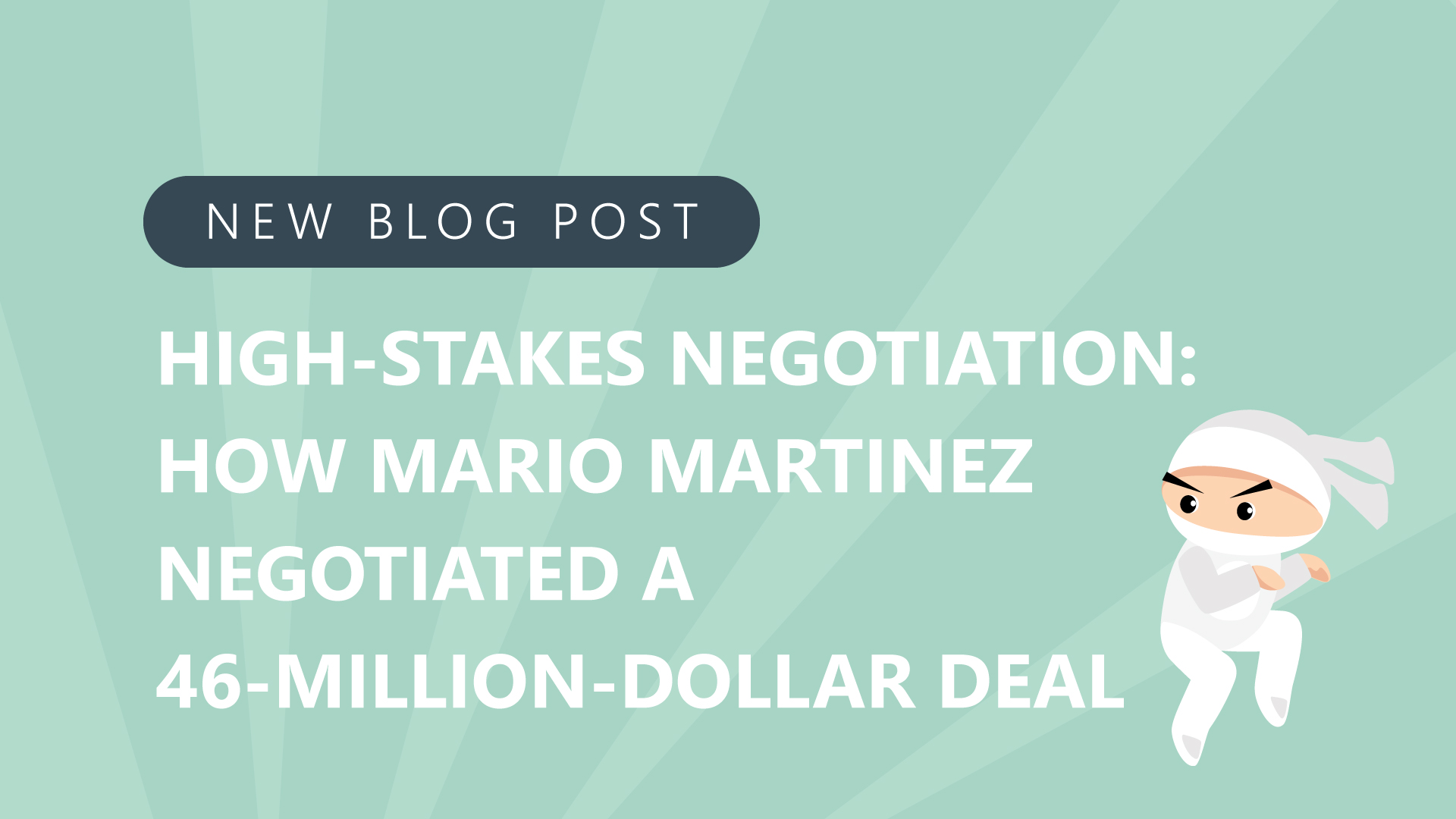While Mario Martinez was with Sprint, he’d been working with a Fortune 10 company for years. He built out a wireless infrastructure in their corporate offices. He created a system where employees could become customers through an online portal versus paper forms.
Seven years later—and over 5 million dollars of investments into this company—they’d recouped all of their expenses.
During this time, Mario also built a strong friendship with the CIO. As a global account director, he knew he had to keep this relationship close to his vest.
The CIO texted him and warned him of a global initiative to reduce IT spend and infrastructure by 20%. The CPO forecasted he could hit the 20% mark by renegotiating all of their contracts—including the one with Sprint. Mario knew he needed to play ball.
The negotiation process
It took four weeks to put the RFP together. Then, they started negotiations. The company wanted to negotiate calls down to four cents a minute. However, the lowest Mario could go was six cents a minute. But they only cared about price.
They refused to budge. Mario refused to budge. He knew that it would be next to impossible for them to unseat them. Mario started to explain why the company couldn’t afford to go with another carrier, but the CPO cut him off and refused to hear him out.
48 hours later, the CIO texted Mario and said that the CPO had made the decision: They were moving away from Sprint. Mario kept his cool and asked his friend to do him a favor. He said, “Before you agree with the decision, ask the CPO two questions.”
- In your evaluation, did you consider how AT&T or Verizon are going to build a $5–7 million integration directly into SAP Ariba?
When the CPO says “No,” ask him:
- How could you not have considered that?
The CIO agreed. He took his time and carefully found a way to ask the CPO these questions without making him combative.
Why did any of this matter? Tens of thousands of people would have to move back to signing up for a phone carrier via paper and have to wait up to five weeks to get a phone. Thousands of users would have to convert from one provider to another.
Back then, people would have to make an appointment in-store during business hours to transfer their contacts. That would be thousands of wasted man-hours.
Secondly, Sprint was the only carrier fully integrated with the company’s system. For the IT team to build it out themselves, it would cost them 12 million dollars. Procurement was trying to save $4 million by negotiating calls down to four cents a minute. But they’d be spending $12 million if they contracted with another carrier.
Procurement didn’t think it through. They negotiated solely on price versus value. It was a huge mistake.
Remember that you’re a partner with your customers
Soon after, Mario got a text message from the CIO that said “You’re in.”
The CPO called Mario and said, “We want to reconsider this because you’re such a valued partner.” with no idea, Mario knew what had happened. The CPO still asked Sprint to come down to five cents a minute. Mario countered and said he’d only do it if they guaranteed another 20,000 users. The CPO countered at 10,000, and Mario said, “Deal!”
Sprint dropped their price, increased their revenue, and got tens of thousands more users, all because Mario understood the complexities of partnering with his customers and knowing their business. And that’s how Mario negotiated a 46-million-dollar deal.
Hear the whole story in episode #435 of Negotiations Ninja!

